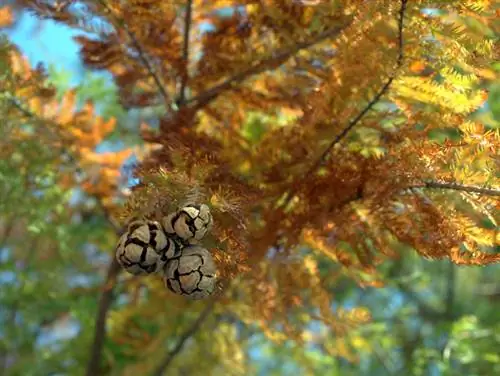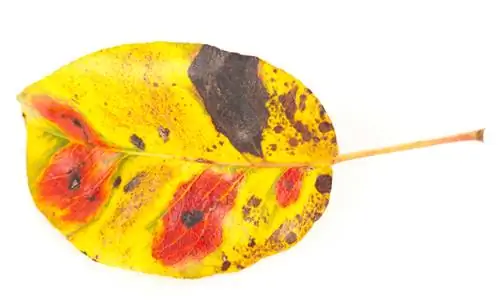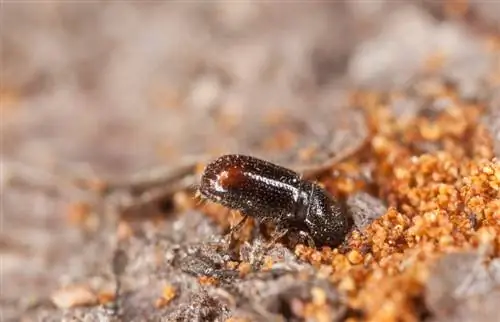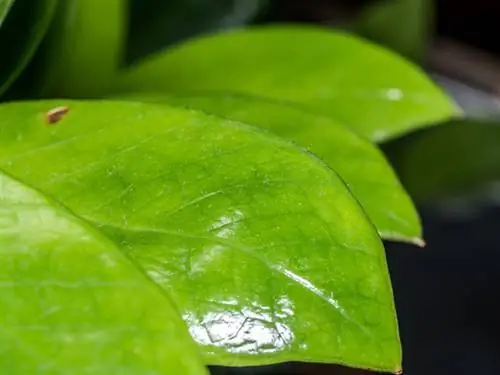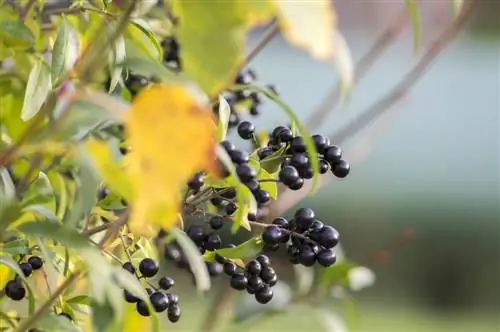- Author admin [email protected].
- Public 2023-12-16 16:46.
- Last modified 2025-01-23 11:20.
Blue cypresses are robust if they are in a favorable location and are well cared for. Many damages such as brown spots can be traced back to care errors. Sometimes fungal diseases or pests are responsible. How to identify and treat blue cypress diseases.

What diseases occur in blue cypress trees?
Blue cypress diseases can be caused by incorrect location, fungal infestation or pests. Brown spots are often caused by care errors or pruning, while fungal diseases prefer moist locations. Pest infestation is shown by wilting shoot tips and feeding passages.
Brown spots due to incorrect location or pruning
If the blue cypress gets brown spots, it is often due to an unfavorable location. Plant blue cypresses in as sunny a place as possible. The plant also cannot tolerate environmental influences such as road s alt or dog urine.
Many brown spots occur due to incorrect care. Do not let the soil dry out, but avoid waterlogging. Fertilize according to instructions. Too much fertilizer is just as harmful as too little.
Incorrect pruning can also cause brown spots. Never cut directly into the old wood, always leave a few branches with needles.
Fungal diseases due to unfavorable location
Fungal infestation occurs relatively often in very moist locations. You can tell that a fungus has infected the plant when the shoot tips die and many brown spots appear. If there are no signs of feeding on the affected parts of the plant, there is a fungal disease.
Cut off the affected plant parts generously and dispose of them with household waste, never with compost. Also collect fallen shoot tips!
There is currently no effective chemical control. Therefore, keep a close eye on the blue cypresses so that you can intervene quickly.
Detecting and treating pest infestations
Two pests cause problems for blue cypresses: Thuja leaf miners and Thuja bark beetles. An infestation usually becomes noticeable as follows:
- Shoot tips wilt
- Feeding passages visible on the shoot tips
- Shoot tips die off
- Shoots are hollow inside
If you have a pest infestation, cut off all affected parts and dispose of them with household waste. If the infestation is very severe and detected too late, the poisonous blue cypress can usually no longer be saved.
To protect the other false cypresses and arborvitae, it is recommended to use insecticides, which are available from specialist retailers.
Tip
If the blue cypress drops a few needles or entire shoot tips in September, this is not a sign of disease. This is a natural process.

